Bright blue above and pale gray below with a fluffy crest, this is a familiar but stunning bird found year-round throughout most of eastern North America.
Meet the Blue Jay
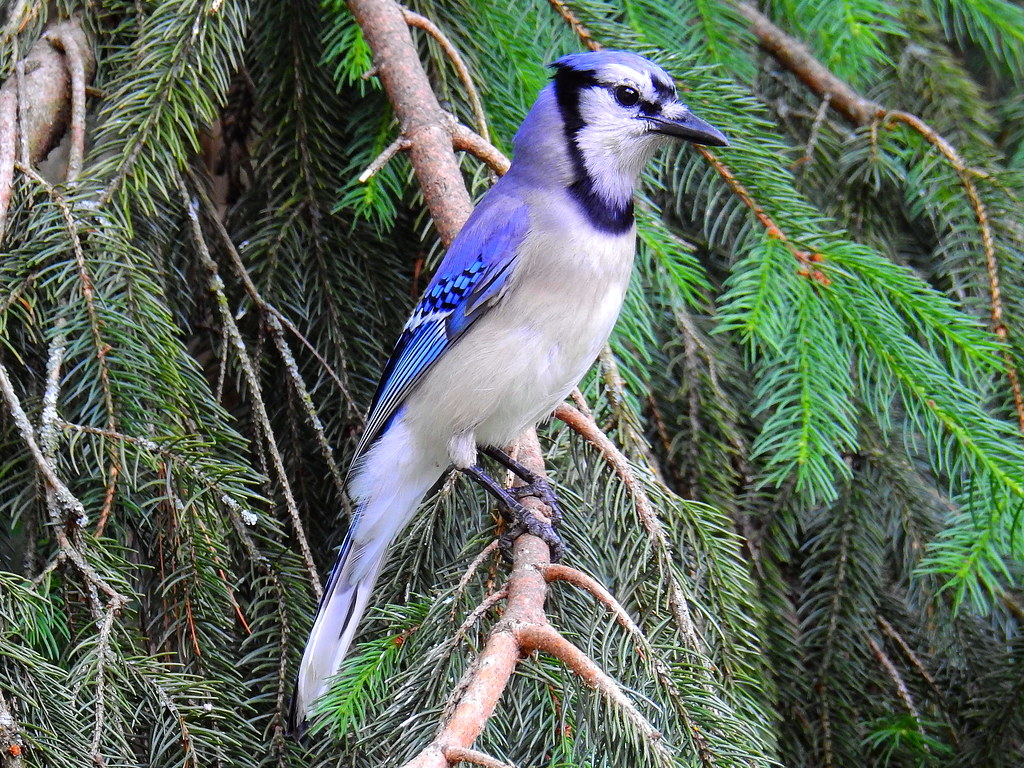
“Blue Jay” by kengi2000 is licensed under CC BY 2.0.
The blue jay (Cyanocitta cristata) is a small colorful bird native to North America. They are predominantly blue in color with a white chest and underparts, and a blue crest; they have a black, U-shaped collar around the neck and a black border behind the crest.

“Blue Jay” by U. S. Fish and Wildlife Service – Northeast Region is marked with Public Domain Mark 1.0.
Males and females of this species are similar in plumage which does not vary throughout the year.
These birds live in most parts of the eastern and central United States, with some eastern populations being migratory.
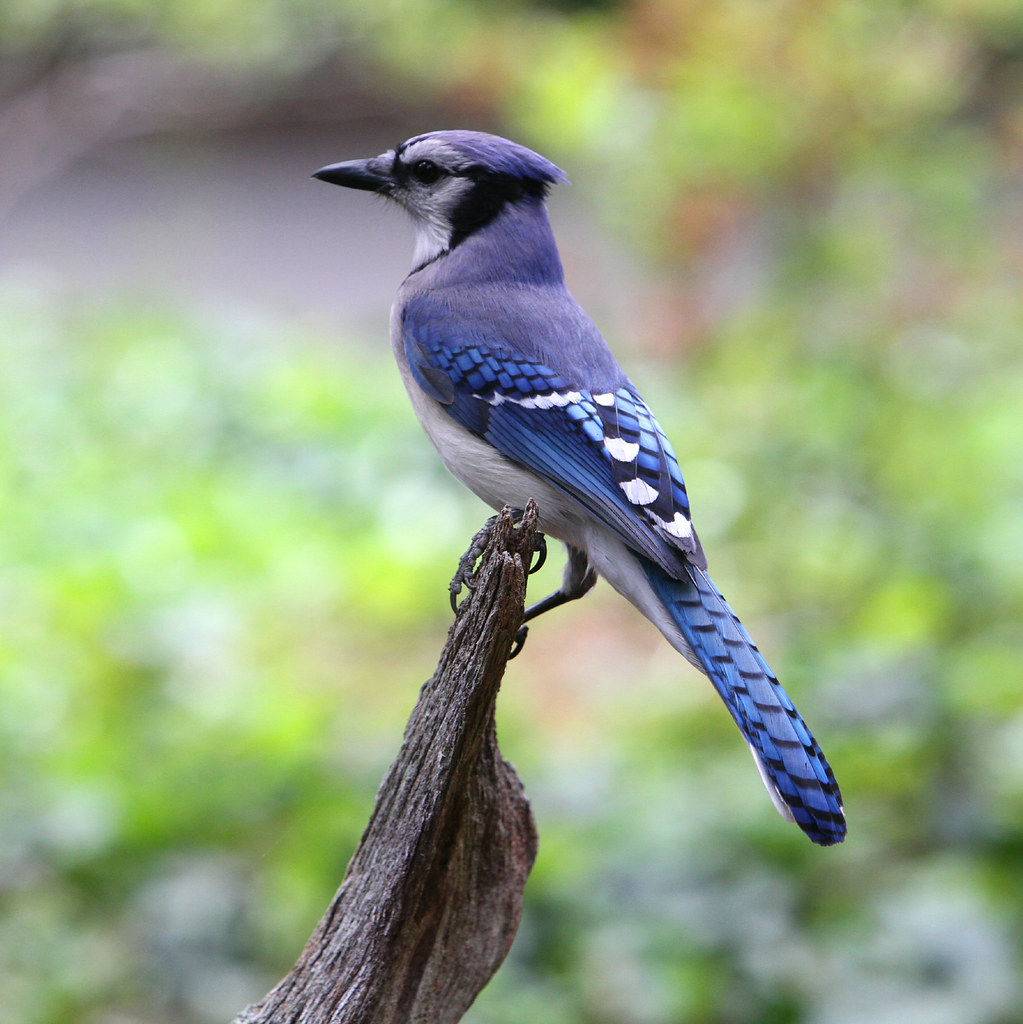
“American Blue Jay” by anoldent is licensed under CC BY-SA 2.0.
Resident populations are found in Newfoundland, Canada, with breeding populations found across some parts of southern Canada.
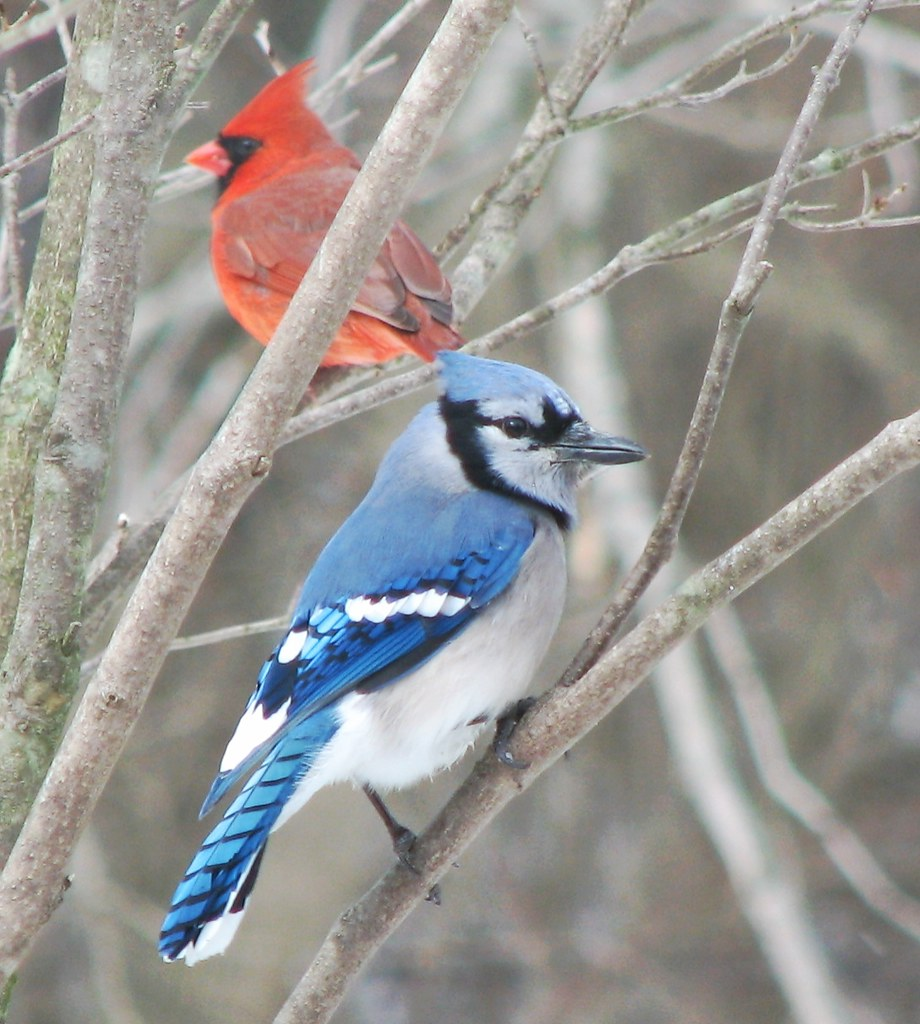
“Cyanocitta cristata (blue jay) & Cardinalis cardinalis (northern cardinal) (Newark, Ohio, USA)” by James St. John is licensed under CC BY 2.0.
The blue jay occupies a variety of habitats within its large range, from the pine woods of Florida to the spruce-fir forests of northern Ontario. It is less abundant in denser forests, preferring mixed woodlands with oaks and beeches. Their sweet spot appears to be forests with plenty of trees, but not too many. They commonly live in mixed woodland forests with beech trees and oak trees. Urban areas are also easily inhabited, as long as parks and gardens contain enough trees to nest in.
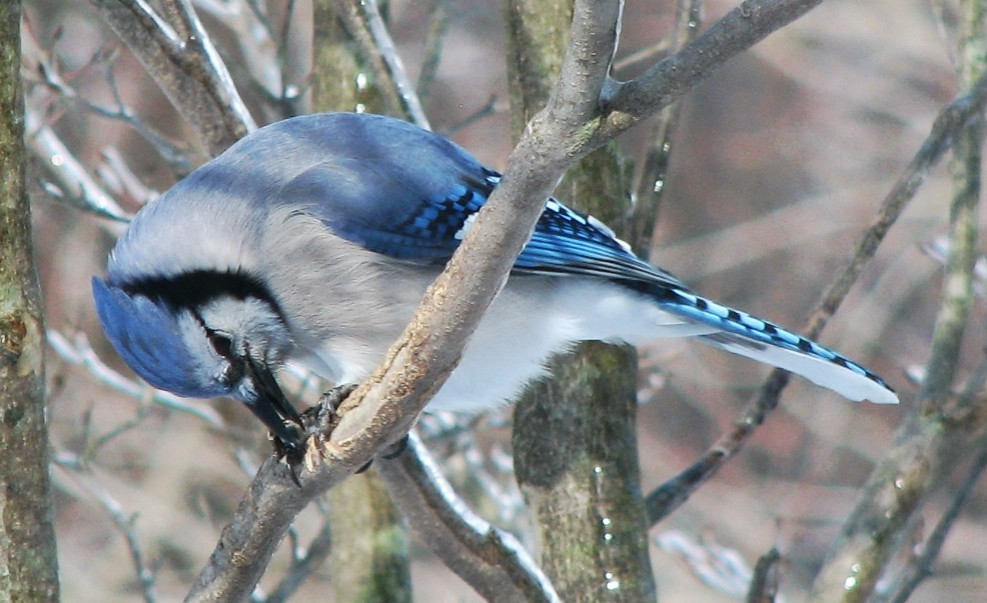
“Cyanocitta cristata (blue jay) (Newark, Ohio, USA) 8” by James St. John is licensed under CC BY 2.0.
Blue jays are omnivores and feed on both plants and animals. Their diet includes acorns, nuts, weed seeds, grain, fruits, and other berries, bread, meat, small invertebrates of many types, scraps in town parks, bird-table food, and rarely eggs and nestlings.
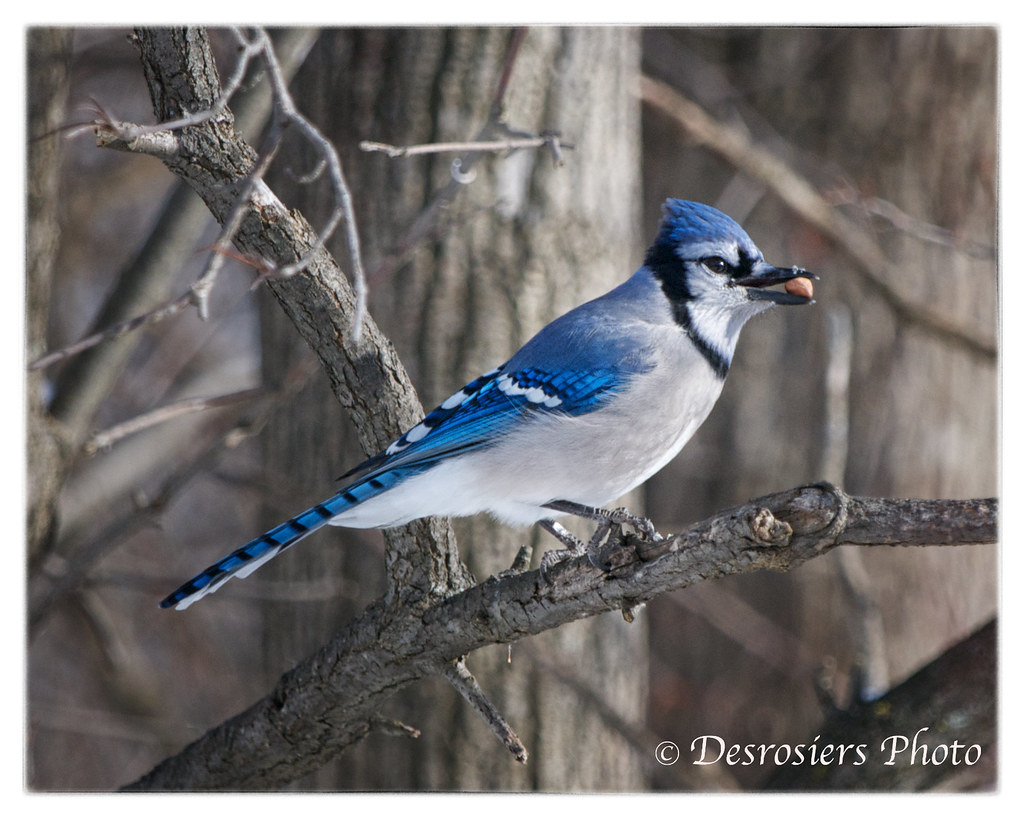
“Blue Jay” by Brian Desrosiers Photography is licensed under CC BY 2.0.
This species forms monogamous pair bonds for life. The breeding season begins in mid-March, and peaks in mid-April to May, extending into July. Blue jays are not particularly picky about nesting locations. If no suitable tree or large bush, they will even use places like large mailboxes or occupy nests of other mid-sized songbirds as long as these are placed in suitable spots. A cup-shaped nest is built out of twigs, small roots, bark strips, moss, and other plant-based material. It may also include cloth, paper, feathers, and occasionally mud. Both sexes build the nest and rear the young, though only the female broods them. The male feeds the female while she is doing so. There are usually between 3 and 6 eggs laid within and incubated over 16-18 days.

“Blue Jay” by d a murphy is licensed under CC BY 2.0.
The young usually fledge between 17-21 days after hatching and may remain with their parents for one to two months.
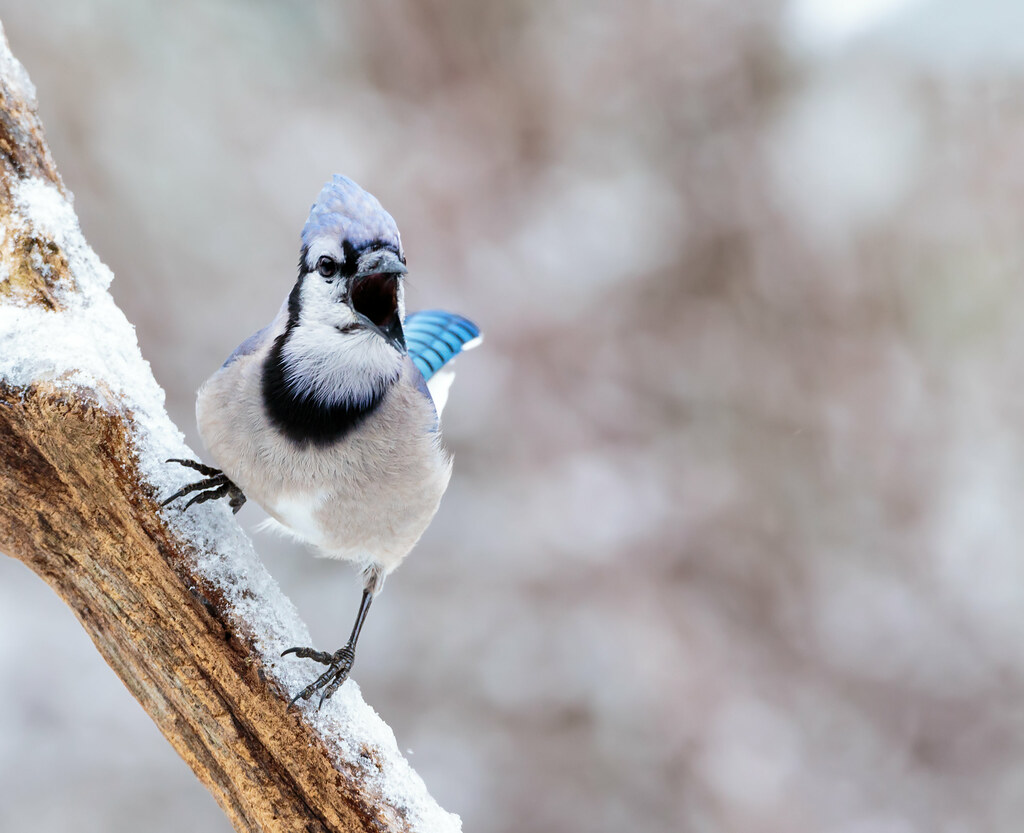
“Blue Jay” by ShenandoahNPS is marked with Public Domain Mark 1.0.
Blue Jays are considered as of Least Concern on the IUCN Red List.
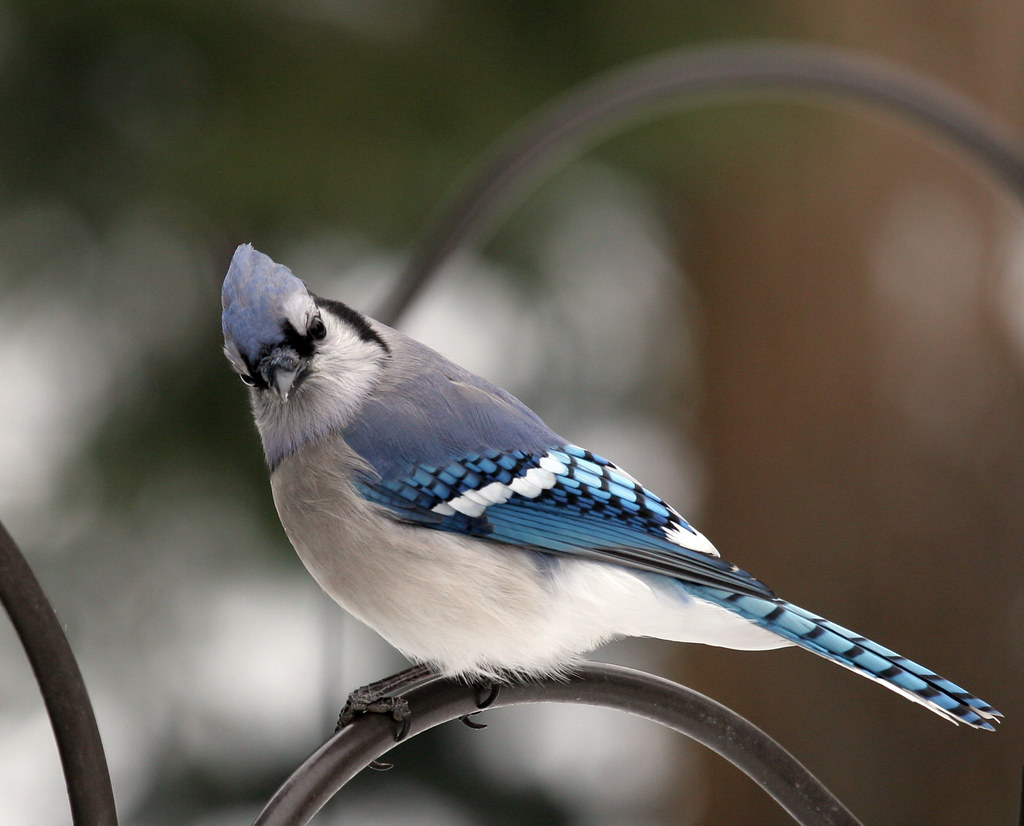
“Blue Jay” by Dawn Huczek is licensed under CC BY 2.0.
You can watch and listen to this bird right here in the video below:




